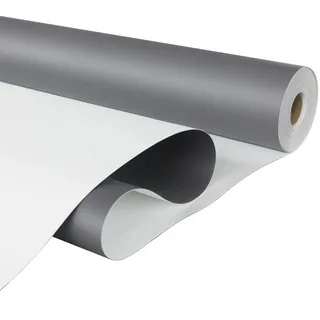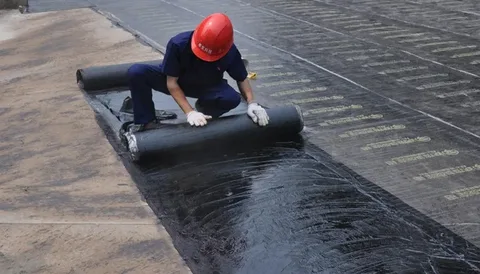In the realm of construction and infrastructure development, waterproofing plays a pivotal role in safeguarding structures against the detrimental effects of water ingress. Among the various techniques available, membrane sheet waterproofing stands out as a reliable and effective solution. This blog explores the importance of membrane sheet waterproofing in Pakistan, where climatic conditions and construction demands often necessitate robust water-resistant measures.
Understanding Membrane Sheet Waterproofing:
Membrane sheet waterproofing involves the application of a specialized waterproof membrane to building surfaces, creating an impermeable barrier that prevents water from seeping through. These membranes are typically made from materials like bitumen, PVC, EPDM, or TPO, offering diverse options to cater to different project requirements.
Challenges in Pakistan’s Construction Landscape:
Pakistan experiences a wide range of climatic conditions, from scorching summers to heavy monsoons, making waterproofing a critical consideration in construction projects. The porous nature of many construction materials used locally can exacerbate the risks of water damage. Membrane sheet waterproofing addresses these challenges by providing a resilient shield against water penetration.

Benefits of Membrane Sheet Waterproofing:
- Seamless Protection: Membrane sheets offer seamless coverage, leaving no room for water to penetrate joints or cracks in the structure.
- Durability: These membranes are designed to withstand the harsh effects of weather, UV radiation, and temperature fluctuations, ensuring long-lasting protection.
- Flexibility: Membrane sheets are flexible and can adapt to the movements and settling of structures, preventing cracks and vulnerabilities in the waterproofing layer.
- Easy Application: The application of membrane sheets is relatively straightforward, making it a cost-effective solution for a variety of construction projects.
Highlighting successful projects where membrane sheet waterproofing was implemented can provide real-world examples of its effectiveness in diverse Pakistani settings. Discussing specific challenges faced and overcome during these projects adds authenticity to the narrative.
In a country like Pakistan, where construction faces unique challenges due to the climate and local materials, membrane sheet waterproofing emerges as a crucial tool in ensuring the longevity and structural integrity of buildings. As the demand for robust infrastructure continues to grow, understanding and implementing effective waterproofing solutions like membrane sheets will be instrumental in constructing a resilient and sustainable future.

Frequently Asked Questions (FAQs) on Membrane Sheet Waterproofing in Pakistan
What is membrane sheet waterproofing, and how does it work?
Membrane sheet waterproofing involves applying a specialized waterproof membrane to surfaces during construction. These membranes, made from materials like bitumen or PVC, create an impermeable barrier, preventing water from penetrating the structure.
Why is membrane sheet waterproofing important in Pakistan?
Pakistan experiences diverse climatic conditions, including heavy monsoons and extreme temperatures. Membrane sheet waterproofing provides a durable and flexible solution to protect structures from water damage in such challenging environments.
What types of membrane sheets are commonly used in Pakistan?
Various materials are used for membrane sheets, including bitumen, PVC, EPDM, and TPO. The choice depends on factors like project requirements, climate, and the specific challenges of the construction site.
How does membrane sheet waterproofing contribute to the durability of structures?
Membrane sheets offer seamless protection, preventing water from seeping through joints or cracks. They are designed to withstand weather extremes, UV radiation, and temperature fluctuations, ensuring the longevity of the structure.
Are membrane sheets easy to apply, and can they adapt to different construction scenarios?
Yes, membrane sheets are known for their easy application. They are flexible and can adapt to the movements and settling of structures, making them suitable for a variety of construction projects.
What are the common challenges faced in membrane sheet waterproofing projects in Pakistan? Challenges may include ensuring proper adhesion, addressing surface irregularities, and adapting to specific climate conditions. However, these challenges can be effectively managed with proper planning and expertise.
Can membrane sheet waterproofing be used for existing structures, or is it only for new construction?
While membrane sheet waterproofing is often applied during the construction phase, it can also be used for retrofitting existing structures to enhance their waterproofing Services.
How does membrane sheet waterproofing contribute to energy efficiency in buildings?
Certain membrane sheets, such as those with reflective surfaces, can contribute to energy efficiency by reducing heat absorption. This can result in lower cooling costs for buildings in hot climates like Pakistan.
